Reza Babanezhad Harikandeh
Torque-Aware Momentum
Dec 25, 2024Abstract:Efficiently exploring complex loss landscapes is key to the performance of deep neural networks. While momentum-based optimizers are widely used in state-of-the-art setups, classical momentum can still struggle with large, misaligned gradients, leading to oscillations. To address this, we propose Torque-Aware Momentum (TAM), which introduces a damping factor based on the angle between the new gradients and previous momentum, stabilizing the update direction during training. Empirical results show that TAM, which can be combined with both SGD and Adam, enhances exploration, handles distribution shifts more effectively, and improves generalization performance across various tasks, including image classification and large language model fine-tuning, when compared to classical momentum-based optimizers.
Iterative Methods via Locally Evolving Set Process
Oct 19, 2024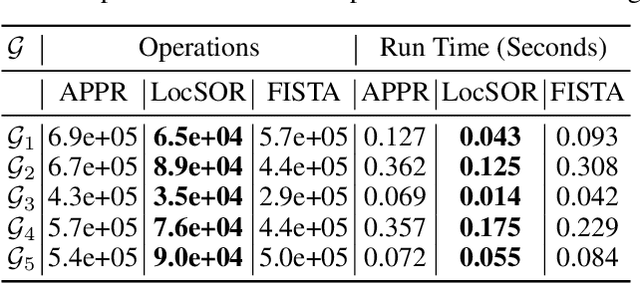
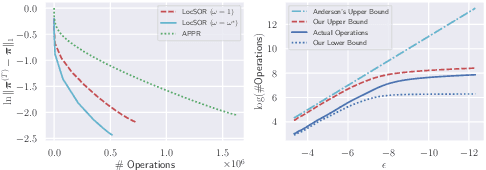
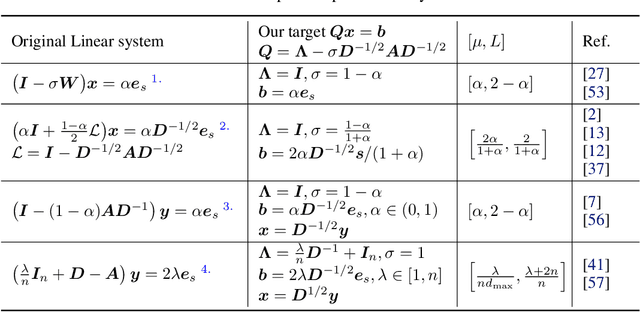

Abstract:Given the damping factor $\alpha$ and precision tolerance $\epsilon$, \citet{andersen2006local} introduced Approximate Personalized PageRank (APPR), the \textit{de facto local method} for approximating the PPR vector, with runtime bounded by $\Theta(1/(\alpha\epsilon))$ independent of the graph size. Recently, \citet{fountoulakis2022open} asked whether faster local algorithms could be developed using $\tilde{O}(1/(\sqrt{\alpha}\epsilon))$ operations. By noticing that APPR is a local variant of Gauss-Seidel, this paper explores the question of \textit{whether standard iterative solvers can be effectively localized}. We propose to use the \textit{locally evolving set process}, a novel framework to characterize the algorithm locality, and demonstrate that many standard solvers can be effectively localized. Let $\overline{\operatorname{vol}}{ (S_t)}$ and $\overline{\gamma}_{t}$ be the running average of volume and the residual ratio of active nodes $\textstyle S_{t}$ during the process. We show $\overline{\operatorname{vol}}{ (S_t)}/\overline{\gamma}_{t} \leq 1/\epsilon$ and prove APPR admits a new runtime bound $\tilde{O}(\overline{\operatorname{vol}}(S_t)/(\alpha\overline{\gamma}_{t}))$ mirroring the actual performance. Furthermore, when the geometric mean of residual reduction is $\Theta(\sqrt{\alpha})$, then there exists $c \in (0,2)$ such that the local Chebyshev method has runtime $\tilde{O}(\overline{\operatorname{vol}}(S_{t})/(\sqrt{\alpha}(2-c)))$ without the monotonicity assumption. Numerical results confirm the efficiency of this novel framework and show up to a hundredfold speedup over corresponding standard solvers on real-world graphs.
Promoting Exploration in Memory-Augmented Adam using Critical Momenta
Jul 18, 2023Abstract:Adaptive gradient-based optimizers, particularly Adam, have left their mark in training large-scale deep learning models. The strength of such optimizers is that they exhibit fast convergence while being more robust to hyperparameter choice. However, they often generalize worse than non-adaptive methods. Recent studies have tied this performance gap to flat minima selection: adaptive methods tend to find solutions in sharper basins of the loss landscape, which in turn hurts generalization. To overcome this issue, we propose a new memory-augmented version of Adam that promotes exploration towards flatter minima by using a buffer of critical momentum terms during training. Intuitively, the use of the buffer makes the optimizer overshoot outside the basin of attraction if it is not wide enough. We empirically show that our method improves the performance of several variants of Adam on standard supervised language modelling and image classification tasks.
An Analysis of the Adaptation Speed of Causal Models
May 18, 2020

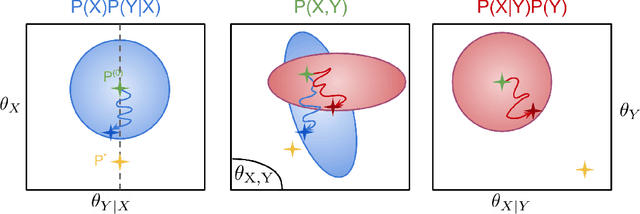
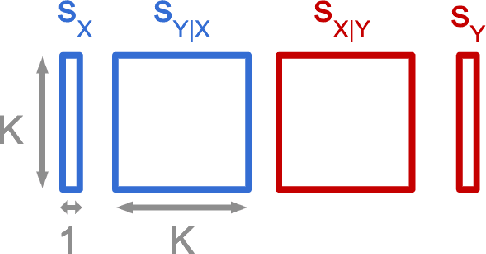
Abstract:We consider the problem of discovering the causal process that generated a collection of datasets. We assume that all these datasets were generated by unknown sparse interventions on a structural causal model (SCM) $G$, that we want to identify. Recently, Bengio et al. (2020) argued that among all SCMs, $G$ is the fastest to adapt from one dataset to another, and proposed a meta-learning criterion to identify the causal direction in a two-variable SCM. While the experiments were promising, the theoretical justification was incomplete. Our contribution is a theoretical investigation of the adaptation speed of simple two-variable SCMs. We use convergence rates from stochastic optimization to justify that a relevant proxy for adaptation speed is distance in parameter space after intervention. Using this proxy, we show that the SCM with the correct causal direction is advantaged for categorical and normal cause-effect datasets when the intervention is on the cause variable. When the intervention is on the effect variable, we provide a more nuanced picture which highlights that the fastest-to-adapt heuristic is not always valid. Code to reproduce experiments is available at https://github.com/remilepriol/causal-adaptation-speed
 Add to Chrome
Add to Chrome Add to Firefox
Add to Firefox Add to Edge
Add to Edge